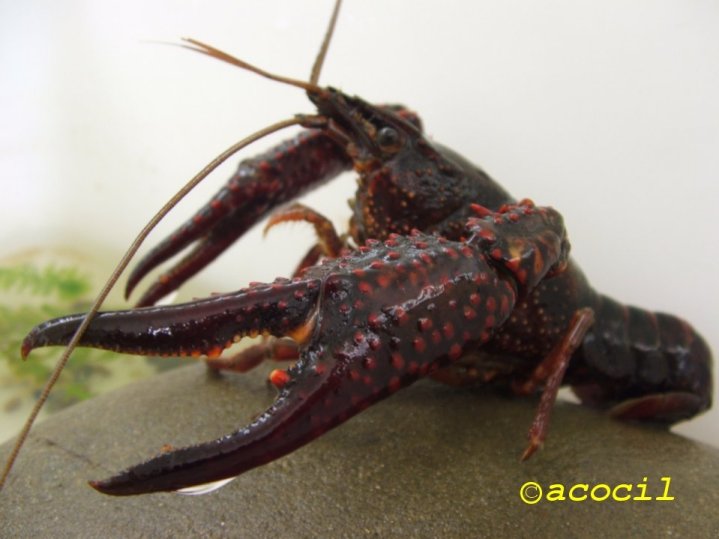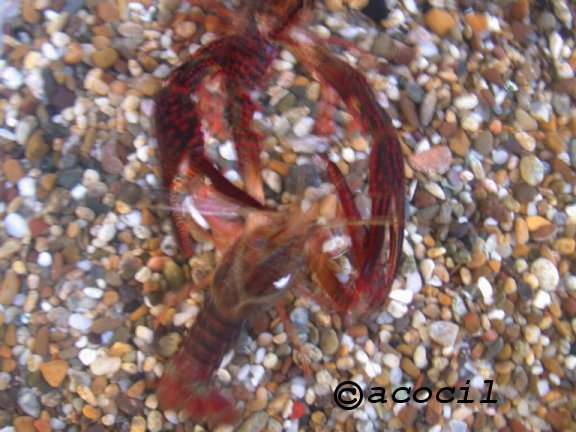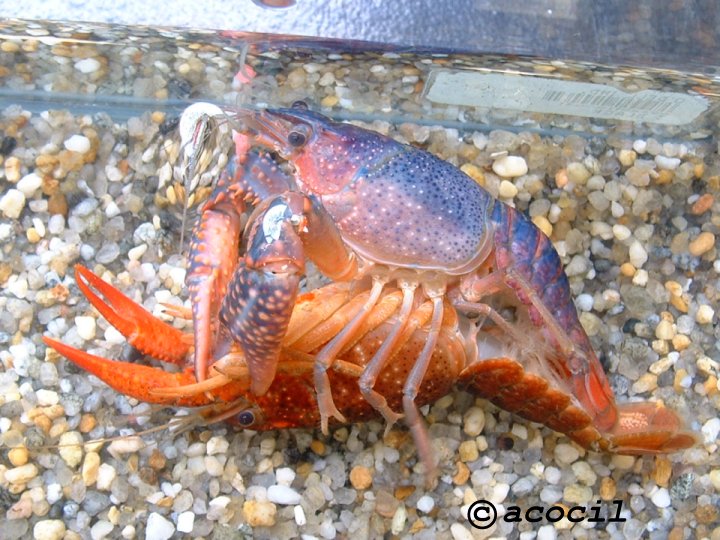|
If you click on the picture below, you will be taken to one of the crayfish biomovies I have posted in
youtube.

Claws (Chelae, Chelipeds) are crayfish main weapons used during fighting.
In crustaceans, claws are good examples of multi-functional
organs used by males and females during foraging, agonistic interactions, competition for mates, mates handling. In crayfish,
claws are used for prey capture and manipulation, defense against predators, inter- and intra-specific interactions, and in
reproductive activities. Claws are the main tools (armaments) of crayfish. Claw function can be subdivided into mechanical
and display functions. Crayfish are sexually dimorphic. Male claws are bigger than female claws. Because both females and
males posses them, claws are not exclusively secondary sexual ornaments but also function as important tools used for locomotion,
food gathering, defense, and as weapons during intra- and interspecific agonistic interactions.
Click on the picture below for a unique chance to see a male-male crayfish confrontation:

Allometry
is the relationship between the size of an organ or structure and the size of the whole organism. Size is a fundamental character
of any organism and many behavioral and physiological attributes vary with body size. Big structures (armaments or ornaments)
may confer competitive ability to the owners of such structures. If large crayfish with larger claws are usually the winners
of agonistic encounters, consequently, they could reproduce more often. Claws are the main tools that crayfish use in foraging,
agonistic interactions, and mating. Juvenile male Procambarus clarkii show positive
claw allometry and juvenile females show claw isometry. At adult stage, males show positive allometry and females show negative
allometry. Males with larger claws are dominant over male conspecifics with smaller
claws and similar body size. Big-clawed females are dominant over small-clawed
females. Having bigger claws and bigger body size increases the likelihood of mating for males. Males could not subdue
females when the females are bigger. Together, male-male competition and mating advantages appear to have selected for enlarged
claws.

During mating, male crayfish will hold with their claws the female's
claws. Male claws are usually bigger than female claws.
I started in 2004 the study of claw allometry and its effect on fighting and mating as the topic for my Master's Thesis
dissertation. I finished on May 2006. Three years! of crayfish fun.
Can a crayfish female without
claws be still able to mate with a big clawed male?

...and the answer is, yes!
|



